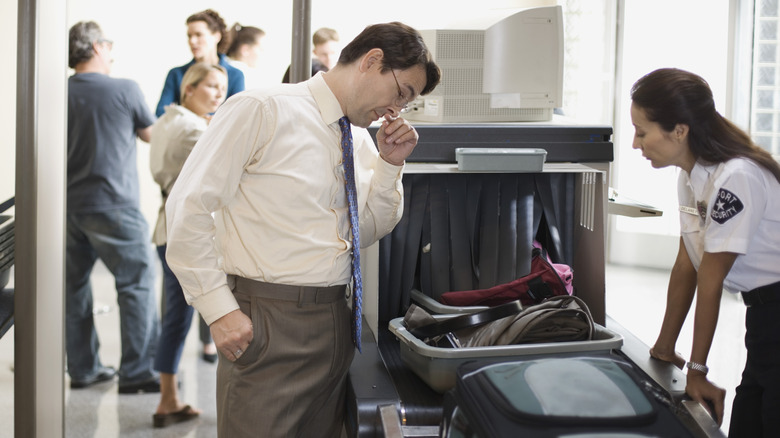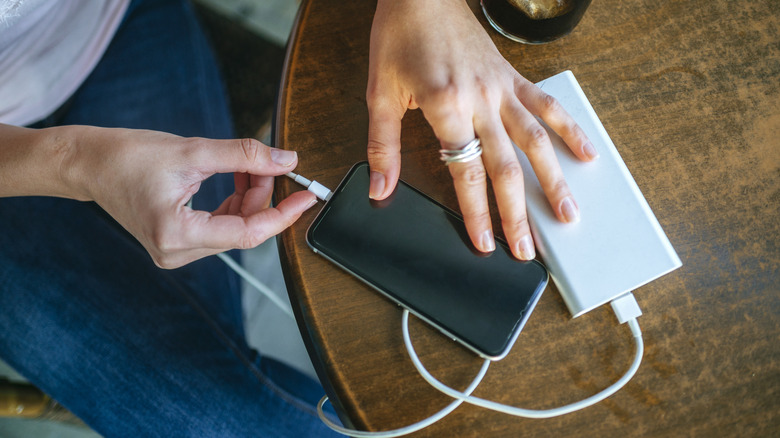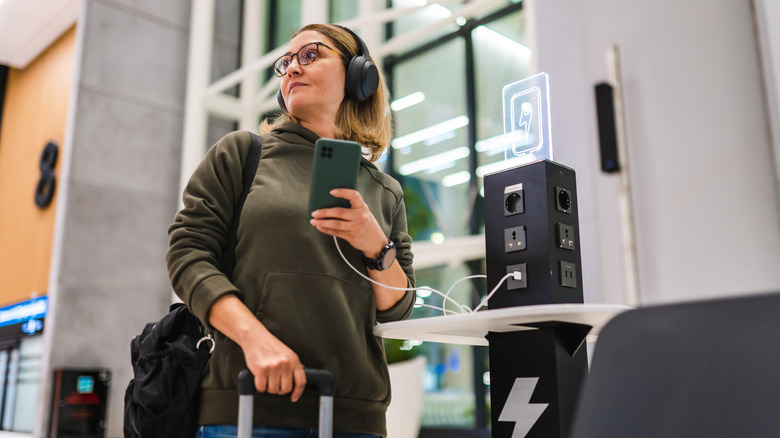The Popular Electronic Travel Accessory Some Airlines Are Banning The Use Of
We may receive a commission on purchases made from links.
There you are, sitting in a passenger jet, gazing out the window as the sun sets over billowing clouds. Soon it will be dark outside, and you'll have nothing to do but sit and try to amuse yourself. You take out your phone and realize, much to your dismay, that your battery is lower than you expected. You yank your small bag from beneath the seat in front of you and pull out a power bank — one of those little portable batteries, about the same size as your smart phone. But the second before you use a cable to tether the power bank to your device, a flight attendant shuffles over, leans close, and whispers, "I'm so sorry, but I must ask you to put that away."
What gives? you wonder. You have charged your device with this very same power bank dozens of times before. Why is it suddenly a problem? Yet as it happens, many airlines have banned the use of power banks on flights, and others will likely follow suit. As long as you are in the air, you are either prohibited from using them at all, or you must follow strict guidelines.
While this rule may seem arbitrary, it stems from a serious safety concern: Lithium ion batteries are a potential fire hazard, and although the likelihood of a power bank bursting into flames mid-flight is extremely low, that remote possibility has many airlines on edge. Soon, we may add power bank use to a list of things flight attendants strongly advise against doing.
Lithium ion fires on planes and their aftermath
Airlines have always been skeptical of lithium ion batteries, because if they combust, the fires are basically impossible to put out. Passengers at Gimhae International Airport in South Korea learned this the hard way in January of 2025, when a fire broke out and burned holes trough a passenger jet's fuselage; investigators believe the fire resulted from a faulty power bank. Luckily, the Air Busan flight wasn't in the air and there were no fatalities, but the three injuries that resulted were a vivid reminder of how dangerous a lithium-fueled fire can be.
For many years, airlines have required passengers to keep any lithium ion batteries in their carry-on luggage. In theory, a fire in the cabin is better than a fire in the plane's hold, where no one can access or attempt to control the flames. Either way, though, such a fire could wreak havoc, causing an emergency landing and, even in the best-case scenario, filling the confined space with toxic vapors. In response to this danger, airlines like Air Asia, EVA Air, China Airlines, Uni Air, Hong Kong Airlines, Singapore Airlines, and Thai Airways now have policies against passengers using power banks in flight. In some cases, the USB connector (and any other port) must be covered completely with tape before boarding.
To be clear, these airlines have banned using power banks on planes, but in most cases, you can still transport them with you, along with cell phones, tablets, smart watches, and even drones, which all use lithium ion batteries as well. Given how many odd things you can bring through TSA, this rule about power banks may seem arbitrary; then again, no passenger on earth wants to deal with spontaneous combustion at 40,000 feet.
How to work around the power bank issue
Power banks have now been around for years, and many of us rely on the electricity they provide when traveling. They feed our devices when no outlets are available, and they help us stay connected when we forget to buy adapters for foreign wall sockets, like this Universal International Travel Adapter on Amazon. We may even use them to test different voltages in hotels, instead of plugging our precious smart phones directly into a wall and watching them fry.
Still, most people won't have any problem leaving their power banks in their bags during flights. The easiest solution is to simply top off your battery before you board and ration its use. Modern airports offer more charging stations than ever before, so most travelers shouldn't have any trouble getting close to 100%, as long as they have a spare hour and think ahead. To help you budget your power usage, here's how to make your phone battery last longer while traveling. Meanwhile, many planes have USB outlets embedded in the seat in front of you, so you can just charge with a standard power card.
If the thought of a lithium battery exploding gives you the willies, you might just leave the power bank at home. They're not necessary for travel and obstaining from using one might give you peace of mind. Once you arrive at your destination, powerbanks are usually pretty affordable — in the $20-30 range at chain retailers — so you can keep the power flowing throughout your trip.


